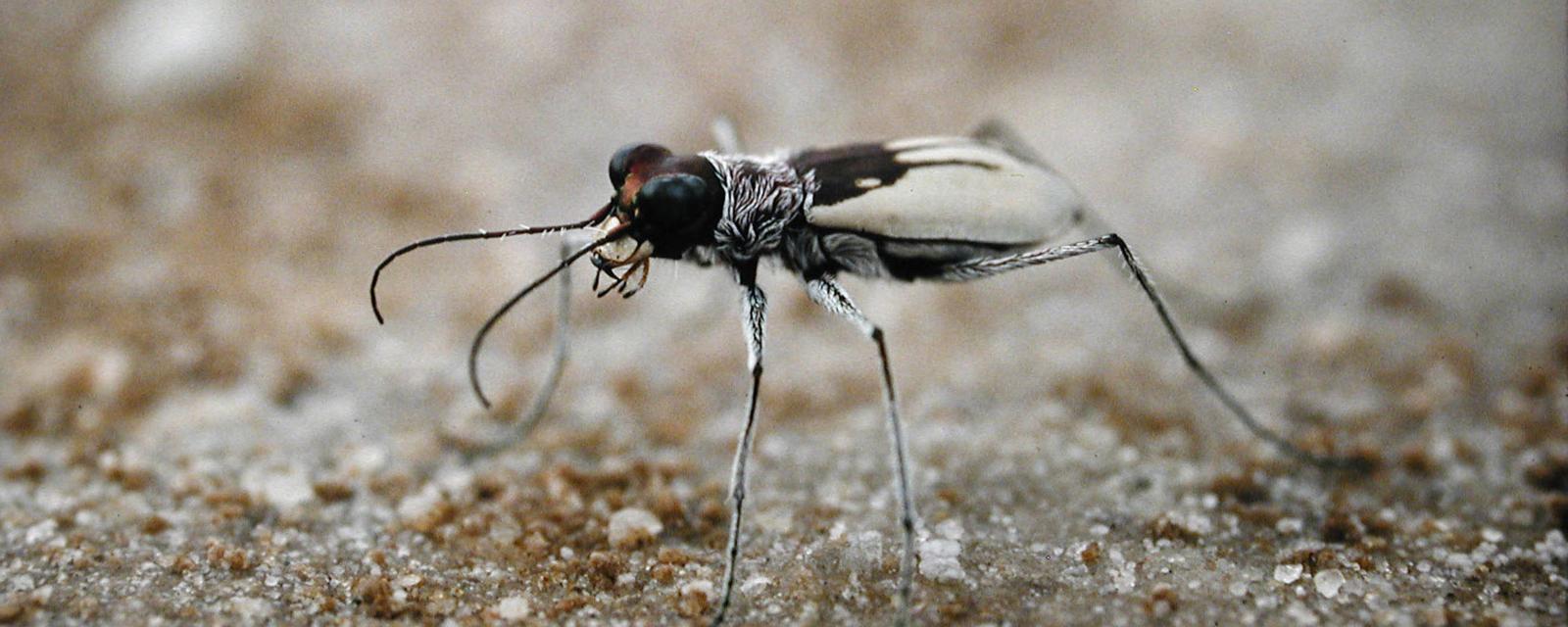
Who would win in a race between an American cockroach and an Australian tiger beetle?
The cheetah is famously the fastest land animal on the planet, running at up to 120 kilometres an hour (75 miles per hour). Its extreme speed means it achieves a kill on around half of its hunts.
That's impressive, but you surely knew it already, because cheetahs are so over-exposed. The British comedian Noel Fielding once complained in a song that the big "showoff animals" tend to get all the attention, and the cheetah's sprinting skills are a pretty clear case. So Fielding would no doubt approve of Thomas Merritt, who in 1999 set out to identify the fastest running insect.
Run, insect, run
Merritt, then at the University of Florida in Gainesville, began by trawling research databases and consulting fellow entomologists to draw up a list of contenders. He decided valid entrants had to have been timed at least five times, and that the results to have appeared in a scientific journal. As a result a tiger moth caterpillar (Apantesis vittata), recorded travelling over a table top at a nimble 5 kilometres per hour (3.1mph), was ruled out on both counts.
Three other candidates with better recorded claims were, in any case, faster.
An American cockroach, poised to sprint (Credit: Redmond Durrell / Alamy)
In 1991 two scientists at the University of California, Berkeley,used a pressure-sensitive plate and high-speed cameras to track eight American cockroaches (Periplaneta americana), sometimes known as waterbugs. They can fly but rarely bother, and go fastest when they run on their two hind legs. In the tests they covered 1.5 metres (5 feet) in one second, achieving a speed of 5.5km/h (3.4mph).
However, in 1996 scientists in the Netherlands tested two species of Australian tiger beetle, Cicindela eburneola(pictured at the top of the article) and Cicindela hudsoni. Both have "vestigial" wings, so they cannot fly. But they make up for it with running skills. The researchers clocked them at 6.8km/h (4.2mph) and 9km/h (5.6mph) respectively.
On this measure, C. hudsoni - capable of covering 2.5 metres (8ft) in one second - is the fastest running insect. At top speed its visual system cannot keep up, and it has to slow down to see anything.
Size matters
However, in a contest of speed relative to size, another species heads the pack. The smaller C. eburneola can travel 171 body lengths per second, well ahead of C hudsoni (120bl/s) and P. americana (50bl/s).
Humans and other animals famed for their absolute speed are sorry laggards in this race. Usain Bolt, the 100m world record holder, may have a top speed of 44.2 km/h (27.3mph), but at 1.96m (6ft 5ins) tall, this is a mere 6 bl/s. Even the cheetah only manages around 16 bl/s.
To find a real champion runner, though, you have to look outside the insects. Earlier this year, Paratarsotomus macropalpis, a mite from southern California, was recordedtravelling at 0.225 metres per second (0.5mph). This may seem slow, but with a body length of 0.7mm it equates to an extraordinary 322bl/s.
Merritt did consider creatures that travel at high relative speeds like this, but he ultimately disregarded them on the grounds that size is not normally considered in other contests such as fastest land vehicle.
What's more, small animals have an unfair advantage. P. macropalpis can stop, change direction, and accelerate very quickly, because its small size means it doesn't experience much air resistance.
No comments:
Post a Comment